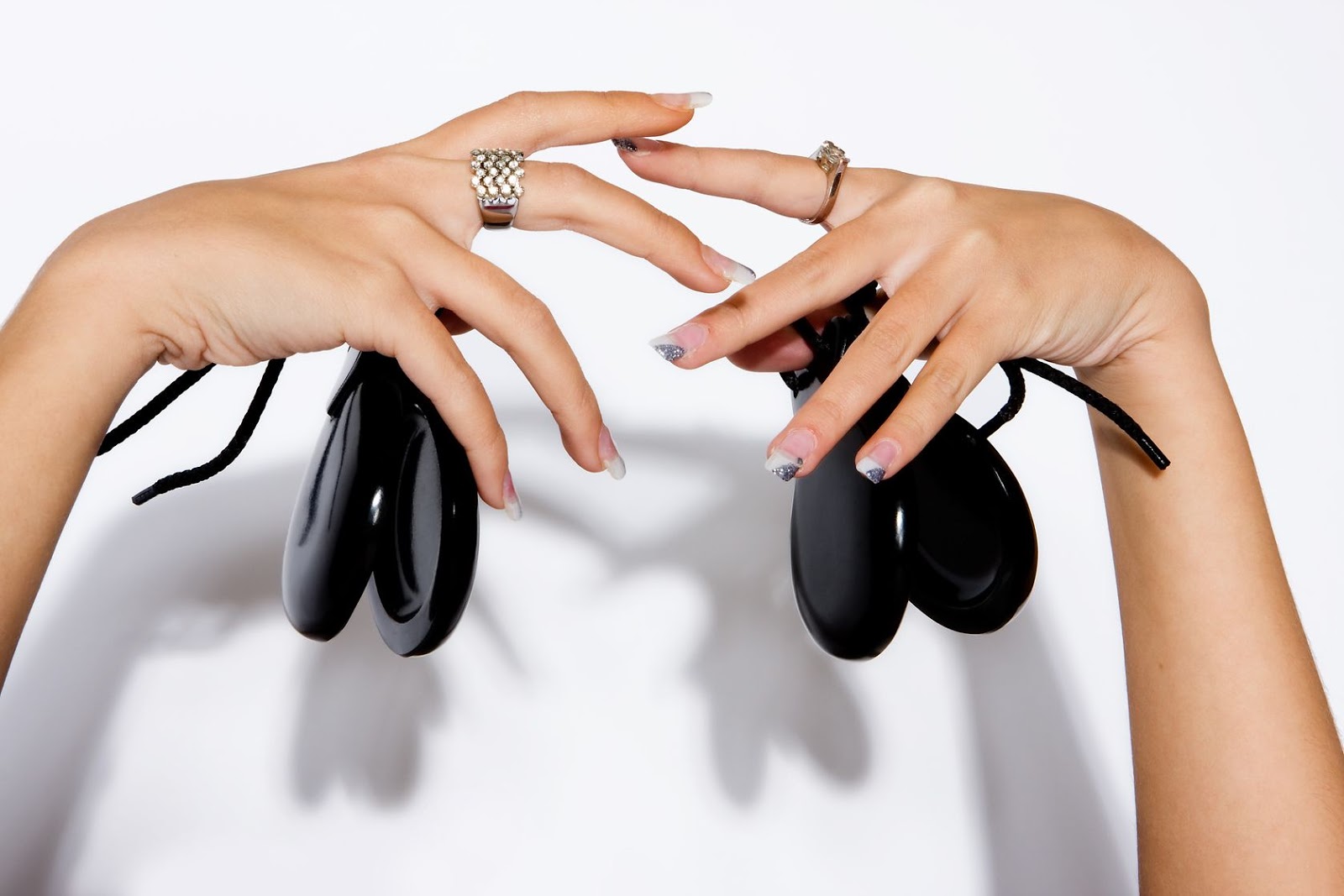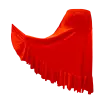Method for playing the castanets
The castanets are a percussion instrument with centuries of history. Its origin goes back to the year 1000 B.C, specifically to the fenicians, an inminent commercial flourishing culture in the Mediterranean area countries: Greece, Turkey, Italy, Spain, etc. However, through history Spain has been the only one that has preserved and developped its use since then. The castanets are part of our cultural heritage, in fact, they are consider one of the national instruments. The castanets are often used to give color and spanish character to the music.
Its also a very recognizable instrument in flamenco dance and its made of all shorts of materials. The plastic castanets, usually cheaper and with less quality, make an strident noise when they are hit. But there exists also wooden ones, ebony, palisander or fiberglass, that are mostly used by professionals. This instrument is formed by two shells with two small ears that have perforated holes through which a cord is passed, to tie both parts.
Proper way of using the castanets
First, you have to ensure that each of the castanets has a differentiated sound, one is higher, the other lower. You have to put the one with the higher pitch in the right hand and the other one on the left. You have to put them in the thumbs of each hand, first the part that has the knot and then the other. It is very important that the castanets are well fitted to your thumbs, but they do not have to squeeze.
Position of the hands
To properly manage them is really important to position your fingers correctly. The right way to do it is putting the tips of the fingers faced and the palms turned to your body. The castanet of the right hand has to be played with the pinky and ring fingers, and middle and index fingers. In the left hand you have to play it with the middle, ring and pinky fingers at the same time.

Rythm
The rythm has to start with the right hand, counting the last key with the sound of the left castanet. To achieve a good rythm is convenient to know that the sound of the castanets is based in different combinations of five independent elements.
-
CA-RRE-TI-LLA: This element is only used in the right hand. Trying to move the wrist as little as possible, you start to play the CA-RRE-TI-LLA, which consists of four strokes, CA, with the pinky; RRe, with the ring finger; TI, with the middle finger; LLA, with the index.
-
TAN: That is how it is called the stroke that you have to do after CA-RRE-TI-LLA. It is played with the ring and middle finger simultaneously, without any notice of different time in between the four strokes of CA-RRE-TI-LLA- and TAN , even though this last one is played a bit stronger.
-
TIN: This sound has to be heard after CA-RRE-TI-LLA-TAN. It is played with the ring and middle fingers of the right hand simultanously.
-
TIAN: This is how it is called when the sounds TIN and TAN sound together.
-
POSTICEO: This sound consists in the clash of the two castanets. In order to do it you have to bring your right hand to the left and clash them together.
IMPORTANT: If you are interested, here you can buy castanets from our web of Flamencoexport.









































 Wholesalers/Stockists
Wholesalers/Stockists Contact
Contact



